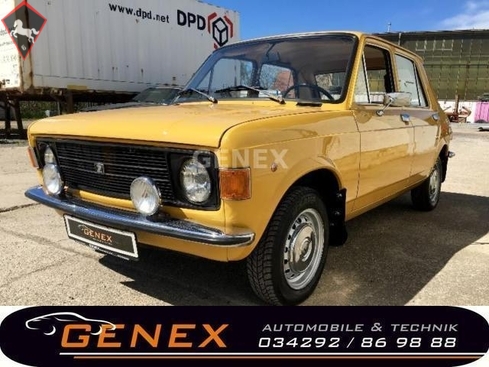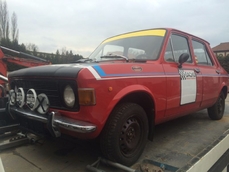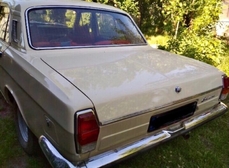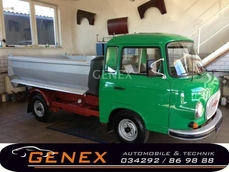Zastava 1300 "DDR" 1976
General description :
komplett restaurierter Zastava , ein Muss in jeder Sammlung! Oldtimergutachten ( H.Kennzeichen bei Kauf anbei
bitte bei Besichtigungsabsicht TERMIN vereinbaren da unsere Fahrzeuge z.T.unterschiedliche Standorte haben können,sie suchen Ihr Wunschfahrzeug,fragen sie uns Tel.0171 2080004....(z.T.über 100 Fahrzeuge am Lager oder im Kundenstamm) keine Haftung für Inseratsfehler!
GENEX,schon immer etwas Besonderes!:-)
1976 Zastava 1300 "DDR" is listed for sale on ClassicDigest in Beuchaer Str. 58DE-04821 Brandis by Genex Automobile & Technik for €8900.
Car Facts
Car type : Car Make : Zastava Model : 1300 Model Version : "DDR" Engine size : 1.1 Model Year : 1976 Sub type : Sedan Location : Beuchaer Str. 58DE-04821 Brandis Vehicle Registration : Undefined
8900 €
Seller Information
Genex Automobile & Technik
Genex Automobile & Technik
+49 (0)34292 50881857
Genex Automobile & Technik
+49 (0)34292 50881857
People who viewed this Zastava 1300 also viewed similar Zastava listed at ClassicDigest
Other cars listed for sale by this dealer
About Zastava
Tito's revengeZastava Automobiles was a Serbian automotive manufacturer that had a long and complex history, primarily known for its association with Fiat. The company originally started in 1853 as a firearms manufacturer and expanded into automobile production in the mid-20th century. Zastava was Yugoslavia's primary car manufacturer.
Partnership with Fiat:
Fiat License: Zastava's most significant period was marked by its partnership with Fiat. The company acquired licenses from Fiat to produce vehicles based on Fiat models.
Fiat Models Production: Zastava produced a range of vehicles under Fiat licenses, including the Zastava 750, a version of the Fiat 600, which became one of their most iconic models.
Quality and Comparison with Fiat:
Quality Concerns: Zastava's cars, though based on Fiat designs, were often considered to have inferior build quality compared to the original Italian Fiats. Quality control issues, materials, and manufacturing processes sometimes led to concerns regarding reliability and overall build quality.
Economic Factors: Zastava faced challenges due to economic conditions, lack of modernization, and constraints in production methods, which often impacted the quality of the vehicles they manufactured.
Evolution and Changes:
Political Changes: Zastava, like many industries in the region, faced significant challenges due to political instability, economic sanctions, and the breakup of Yugoslavia in the 1990s.
End of Production: The company continued operations for some time after the Yugoslav Wars but ceased automobile production in the early 21st century.
Legacy:
Cultural Impact: Despite quality concerns, Zastava cars had a significant impact in Yugoslavia and Eastern Europe. Models like the Zastava 750, based on the Fiat 600, were popular due to affordability and practicality.
Historical Significance: Zastava's history, though complex, is an integral part of the automotive industry in the former Yugoslavia and stands as a reminder of the region's industrial heritage.
In terms of quality compared to original Italian Fiats, Zastava cars were generally considered to be of lower quality, often due to differences in manufacturing standards, materials, and quality control processes. While they were based on Fiat designs, the execution and production methods sometimes led to perceived disparities in overall build quality and reliability.





















